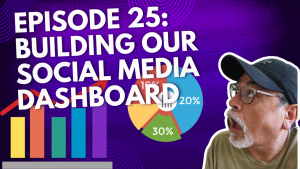The New Year is rapidly approaching, and we can be sure that 2024 will bring its own share of unique leadership challenges. As I reflect upon far too many years of thinking about this critically important topic, some things remain opaque, but some have become increasingly clear. In 26 years in leadership positions as an officer in the Army, 10 years as an industry executive, and 11 years as an author and independent consultant, I have marveled at the abundance of leadership material available to anyone who has even a passing interest. Every year it seems the market gets flooded with new books, new courses, new seminars, new coaches, new top 10 lists, new processes, new certifications, and new ways to drive personal and team leadership accountability.
Leadership Credentials vs. Leadership Behaviors
With the overabundance of material out there, one must wonder why there are still bad leaders with leadership challenges – toxic to their teams, toxic to themselves, and ultimately, toxic to their organizations. Some of these leaders have respected credentials reflected by the graduate diplomas hanging on their “I love me” wall, their attendance at the most selective leadership programs, and unique designations created by HR teams to identify them as “High Potential,” so where is the disconnect? Credentials, as important as they are, do not equate to, nor do they necessarily drive, positive leadership behaviors. They may, in truth, have little bearing on whether the person is a good leader in the real world, or not. Good leadership is not about academics, grades, or certifications, it’s about leader actions and behaviors that have real world impacts on people and organizations. While credentials, certifications and leader courses can promote thought leadership and personal growth, too often there is a gap between the theory and the execution. This post is about providing a practical and useful tool to help address leadership challenges and bridge that gap between leadership knowledge and leadership behavior.
The Art of the Right Question
Some years ago, I met an incredible leader at one of the networking events I have attended over the years – Kellogg Innovation Network (KIN for short) – co-founded by Professors Rob Wolcott and Mohan Sawhney from Northwestern University. I was at a lunch sitting next to Betsy Holden, a very accomplished leader and former co-CEO of Kraft Foods. I engaged her in a conversation about how to drive change in large, complex organizations. Betsy laughed, then she told me about how prior to her years at Kraft, she was an elementary school teacher and while there, she learned one of the most important lessons of life. She said it always amazed her how driven we all seem to be to find the brilliant answer, often before we have taken the time and energy to frame the correct question. Yet, framing the right question is key to identifying leadership challenges and deriving effective solutions in any area of life.

Operationalizing the Art
Her statement was life changing to me. We often use the mantle of leadership as an excuse to drive rapid action, wasting untold time and energy solving exactly the wrong questions in our haste – in other words, rushing to failure. If we simply took the time to reflect on the situation, involve our teams in the analysis of the problem, LISTEN to their input, and frame the right questions, we would not only achieve better solutions, but would save critical resources in the process. The lesson stuck with me, and I returned to my corporate job with a changed mindset that would lead to significant changes in my behavior as a leader and a mentor. I began to focus time and energy on understanding the real questions behind our issues and leadership challenges and asked the same of my teams. A questions-based approach seemed to offer so many advantages that I incorporated it into my mentoring practice, my 2013 publication of “Growing Mentor Intelligence – A Field Guide to Mentoring”, the “Companion Workbook” in 2014, and to my mentor workshops given over the past 10 years.
Bridging the Gap Between Leader Knowledge and Behavior
I integrated that thinking into my leadership philosophy. I reflected on how many of the leadership materials, books, conferences; and so on, all seemed to be focused on providing answers to making me a better leader. If I were to just do this or that, follow this list or that, adopt the current characteristics or attributes in vogue at the time, I would be a better leader. But the fact of the matter was that none of these was likely to ever make me or you or anyone else a better leader. I thought about my work in diversity and inclusion where I had begun to fully understand that the real foundation for this work lies in one simple, indisputable truth – that each of us is a unique creation, unique in mind, body, and spirit. I believe this to be the most important truth in life, leadership, and mentorship. Because each of us is unique, there can never be one-size-fits-all answers to any leadership situation. What works for one person is based on who that person is, and since no two people are alike, it is not likely to work the same way for anyone else. To effectively tackle leadership challenges and bridge the gap between knowledge and behavior, leaders must identify and contemplate critical questions before making decisions. Honest reflection on these questions can enhance self-awareness and foster more positive leadership behaviors.
Asking the Right Leader Questions
When I combined this fundamental truth with Betsy’s questions-based philosophy, I decided to create a questions-based framework for decision making. A tool that would provide no answers, but would fit leadership decisions for any situation. This tool is meant to help those navigate leadership challenges and work for you regardless of your situation, status, position, or credentials. Leadership is a rare privilege and an incredible opportunity for personal growth. As you execute your leadership responsibilities, I encourage you to reflect on these questions often and candidly. If you use your answers to drive your behaviors, you will make more informed and intentional decisions to the benefit of both you and your teams and bridge that gap between the leader knowledge you have and the leader behaviors you intend. Only you can make you a better leader.
Leader Decision Framework
Eight Strategic Questions
- What direction(s) do you lead from?
- Up (looking at what your bosses will think), down (looking at what your team thinks), lateral (looking at what your peers will think) or some combination? Why?
- Do you lead from the front or from behind? Do you run to, or away from, the crisis when it hits?
- Do your leadership behaviors reflect courage and integrity?
- How do you inform your leadership decisions?
- How emotionally intelligent are you? (see “Emotional Intelligence 2.0”, Dr. Travis Bradberry and Dr. Jean Greaves)
- How do you fill your “blind spots,” the areas that you cannot see but which are important to your decisions?
- Do you seek and value your team’s inputs before making important decisions?
- What do your actions reflect to your team?
- Do you reflect their qualities and potential or their shortfalls and weaknesses?
- Do you invite diversity of thought, or do you surround yourself with sycophants?
- How “open” is your “open” door? Are you open to respectful challenges and constructive criticism? Do you encourage respectful feedback?
- Do you “walk your talk”? Does your example match your words?
- How do you wield your power as a leader?
- Do you see your leadership opportunity as an entitlement or a privilege?
- Does your team see competence or ego in your leadership?
- How do you assess the impact of your decisions on the lives of those you lead?
- Do you focus on good intent or good result? Is there a difference?
- How do you hold yourself accountable? Do you have a trusted accountability partner who will tell you things you might not want to hear?
- Who takes credit for your team’s successes and failures?
- Do you give the credit for successes to your team rather than to yourself?
- How do you advocate for your people to leaders outside of your team?
- When your team fails, how do you respond? Do you hold yourself as accountable for the failure as you do your teammates?
- Do you admit when you are wrong, own it and to apologize to your team?
- What legacy are you creating with your behaviors and decisions?
- Do you lift your team members up or diminish them by how you treat them, especially when things are not going well?
- What collateral damage do you create in others through your leadership behaviors and decisions?
- Do you inspire your teammates to future possibilities through mentoring and performance development that focuses on their strengths and potential, or do you focus on their limitations and imperfections?
- Do you invest your resources as a leader (especially your reputation, time, and network) to advocate and sponsor your team and those you mentor?
- What is the source of your personal motivation?
- Is your centering in yourself or in something larger than yourself?
- How do you demonstrate gratitude and respect to your team?
- How do you add to the wealth of your life and the lives of those you lead to the extent that they would follow you anywhere, anytime?
- When you are gone, what will be left behind, and will anybody care?
- Do you share your gifts with those you lead to help them achieve their life goals, and encourage them to do the same?
- What are your team members learning about leadership by your example? How will your they reflect on their time with you as their leader?
- What example of life-work balance do you demonstrate by your decisions and actions?
- When you reflect on your life will you find fulfillment for what you have given others as a leader, or regret for what you should have given them?







































